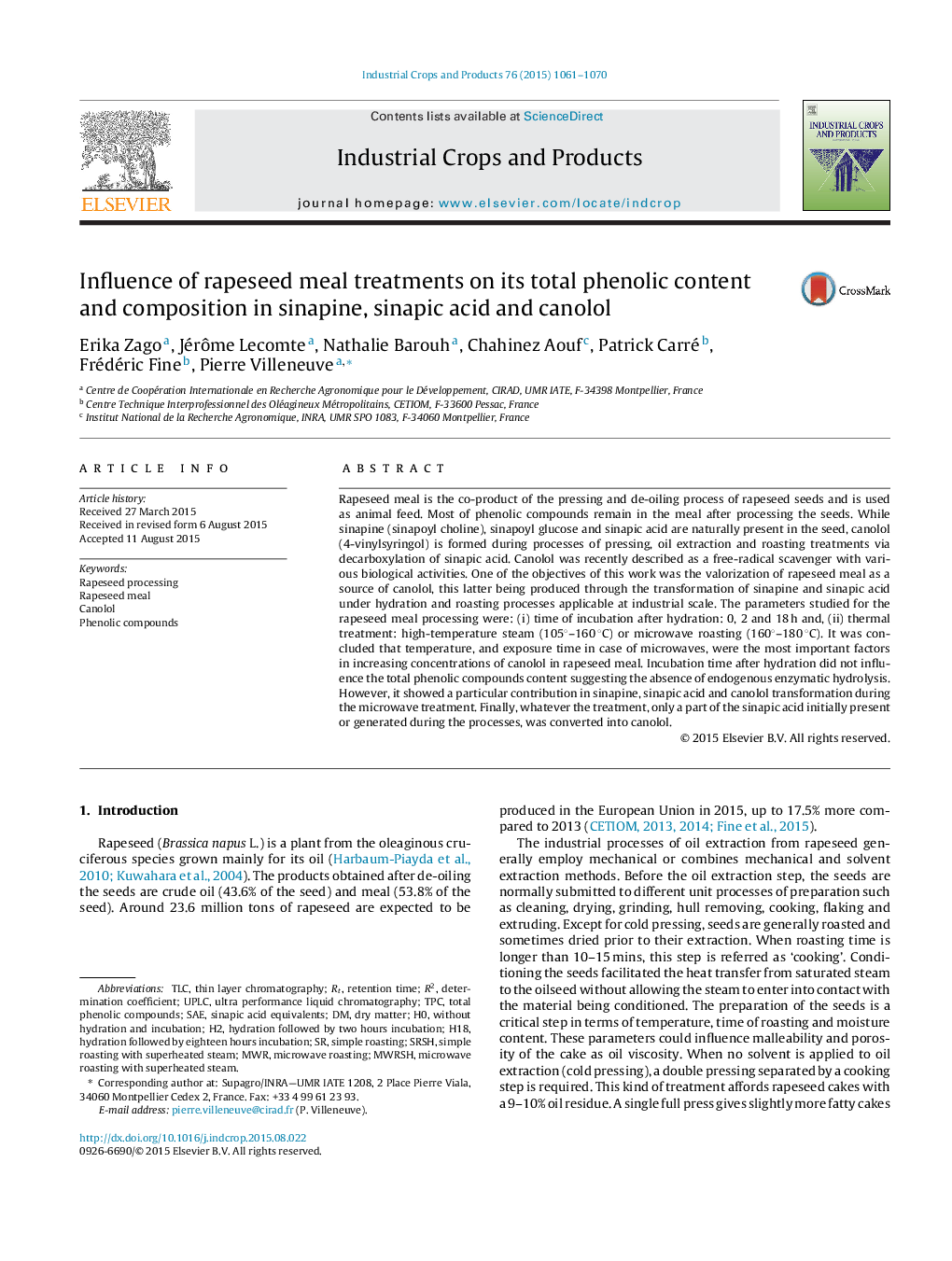| کد مقاله | کد نشریه | سال انتشار | مقاله انگلیسی | نسخه تمام متن |
|---|---|---|---|---|
| 6375620 | 1624834 | 2015 | 10 صفحه PDF | دانلود رایگان |
عنوان انگلیسی مقاله ISI
Influence of rapeseed meal treatments on its total phenolic content and composition in sinapine, sinapic acid and canolol
ترجمه فارسی عنوان
تأثیر تیمارهای غذایی عصاره کلزا بر میزان کل ترکیب و فنلی آن در سیناپین، اسید سیناپیک و کانولول
دانلود مقاله + سفارش ترجمه
دانلود مقاله ISI انگلیسی
رایگان برای ایرانیان
کلمات کلیدی
TLCTPCUPLCSAEMWRTotal phenolic compounds - ترکیبات فنلی کلPhenolic compounds - ترکیبات فنولیRetention time - زمان بازداریdetermination coefficient - ضریب تعیینdry matter - ماده خشکRapeseed meal - وعده غذایی کلزاMicrowave roasting - کباب کردن مایکروویوthin layer chromatography - کروماتوگرافی لایه نازکultra performance liquid chromatography - کروماتوگرافی مایع با عملکرد فوق العاده
موضوعات مرتبط
علوم زیستی و بیوفناوری
علوم کشاورزی و بیولوژیک
علوم زراعت و اصلاح نباتات
چکیده انگلیسی
Rapeseed meal is the co-product of the pressing and de-oiling process of rapeseed seeds and is used as animal feed. Most of phenolic compounds remain in the meal after processing the seeds. While sinapine (sinapoyl choline), sinapoyl glucose and sinapic acid are naturally present in the seed, canolol (4-vinylsyringol) is formed during processes of pressing, oil extraction and roasting treatments via decarboxylation of sinapic acid. Canolol was recently described as a free-radical scavenger with various biological activities. One of the objectives of this work was the valorization of rapeseed meal as a source of canolol, this latter being produced through the transformation of sinapine and sinapic acid under hydration and roasting processes applicable at industrial scale. The parameters studied for the rapeseed meal processing were: (i) time of incubation after hydration: 0, 2 and 18 h and, (ii) thermal treatment: high-temperature steam (105°-160 °C) or microwave roasting (160°-180 °C). It was concluded that temperature, and exposure time in case of microwaves, were the most important factors in increasing concentrations of canolol in rapeseed meal. Incubation time after hydration did not influence the total phenolic compounds content suggesting the absence of endogenous enzymatic hydrolysis. However, it showed a particular contribution in sinapine, sinapic acid and canolol transformation during the microwave treatment. Finally, whatever the treatment, only a part of the sinapic acid initially present or generated during the processes, was converted into canolol.
ناشر
Database: Elsevier - ScienceDirect (ساینس دایرکت)
Journal: Industrial Crops and Products - Volume 76, 15 December 2015, Pages 1061-1070
Journal: Industrial Crops and Products - Volume 76, 15 December 2015, Pages 1061-1070
نویسندگان
Erika Zago, Jérôme Lecomte, Nathalie Barouh, Chahinez Aouf, Patrick Carré, Frédéric Fine, Pierre Villeneuve,
